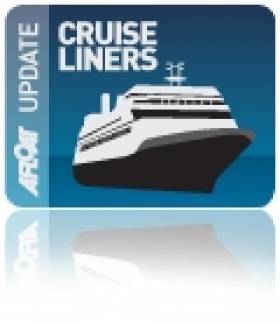Displaying items by tag: Resindensea
The World Berths Bringing Bali-Beds Back to the Capital
#TheWORLD – This morning The World berthed in Dublin Port beside the East-Link Toll Bridge, having made calls to Belfast, Galway and London-Derry in this year of the UK City of Culture, writes Jehan Ashmore.
The exclusive residential vessel of 43,188 tonnes is operated by Residences at Sea. The on board community which own one or more of the 165 private residences between them is spread across the 196m long ship and with facilities on 12-decks.
She has visited Dublin Port several times and on this occasion the vessel is to stay in port for three nights and depart in the early hours of Sunday morning.
Click and scroll across the picture gallery to reveal The World's luxurious facilities which offer many different experiences. Among the various amenities is the swimming pool, a putting green, marina sports platform, the spa, a cigar club and regatta bar plus a choice of dining options. After an active day on board or an excursion ashore what about taking to an open-air Bali-bed!... and under a balmy starry night.
An example of the residents private quarters are the Two-Bedroom Apartments which in the majority have a fully-fitted kitchen, though residents can also dine out in the ships restaurants with a range of cuisine to suit many tastes.
On returning to these two-bedroom apartments, residents can relax in the spacious living and dining areas. The apartment has en-suite bathrooms in both the master bedroom and guest bedrooms. As the ship visits numerous exotic ports and locations, the owners can watch the World go with immediate accessibility with use of the ample veranda space.
The Bahama-flagged The World was launched over a decade ago at the Norwegian shipyard of Fosen Mekaniske Verksteder AS. She is capable of operating her twin 7,400HP direct injection turbo-charged engines from full ahead to full astern in just 50 seconds making her a highly manoeuvrable ship. The turbo-charged engines produce a speed of 18.7 knots.





























































